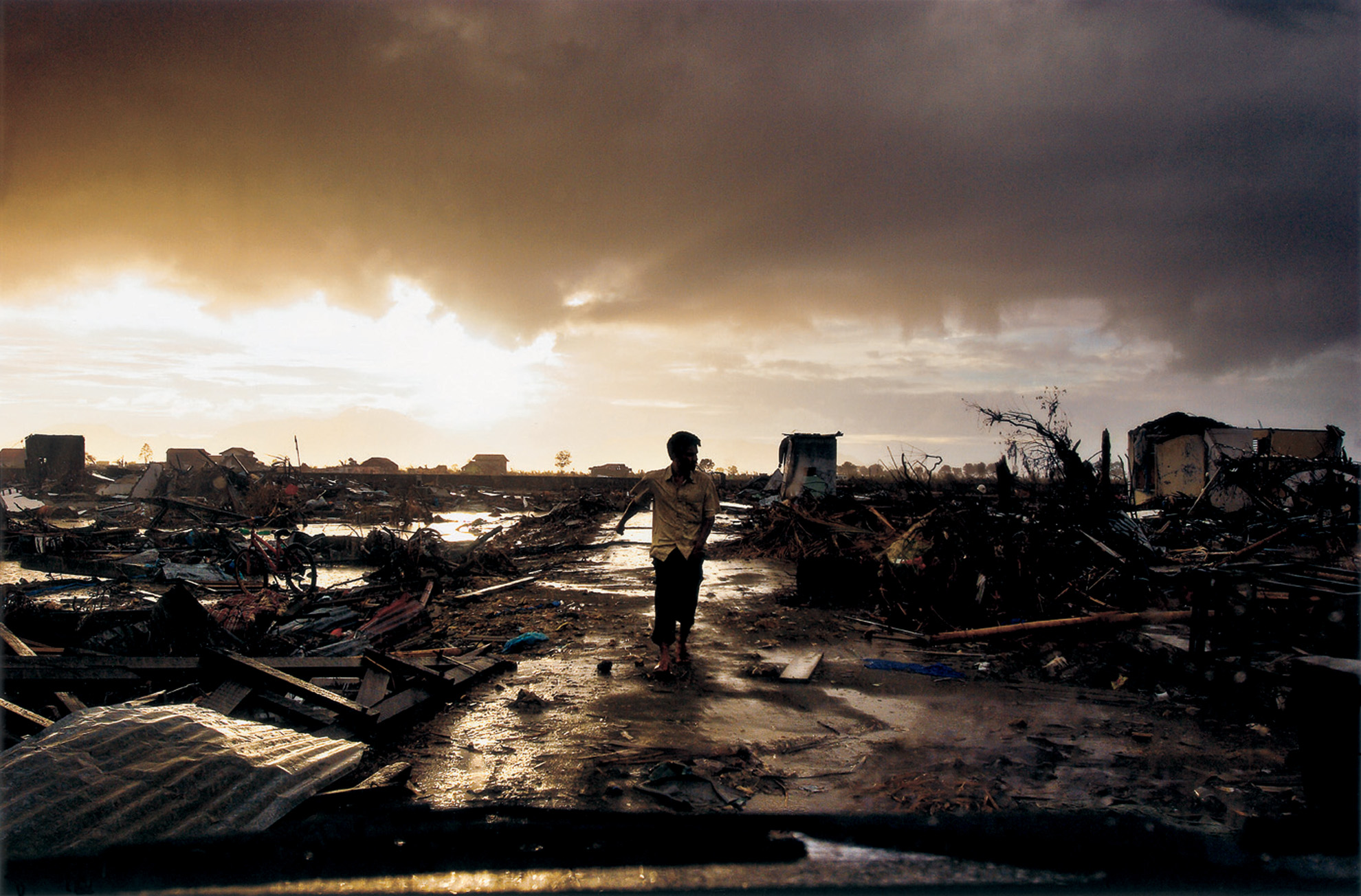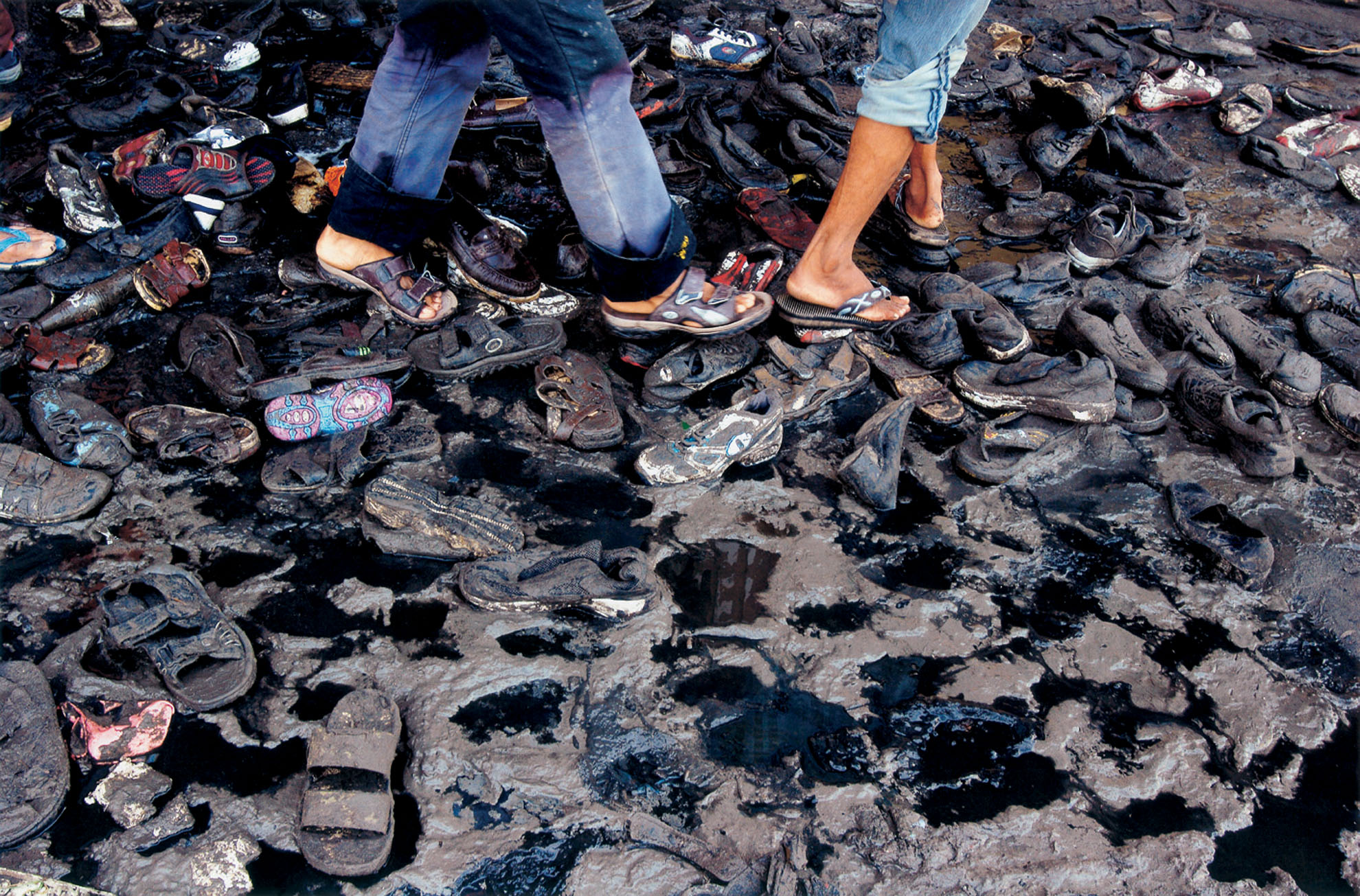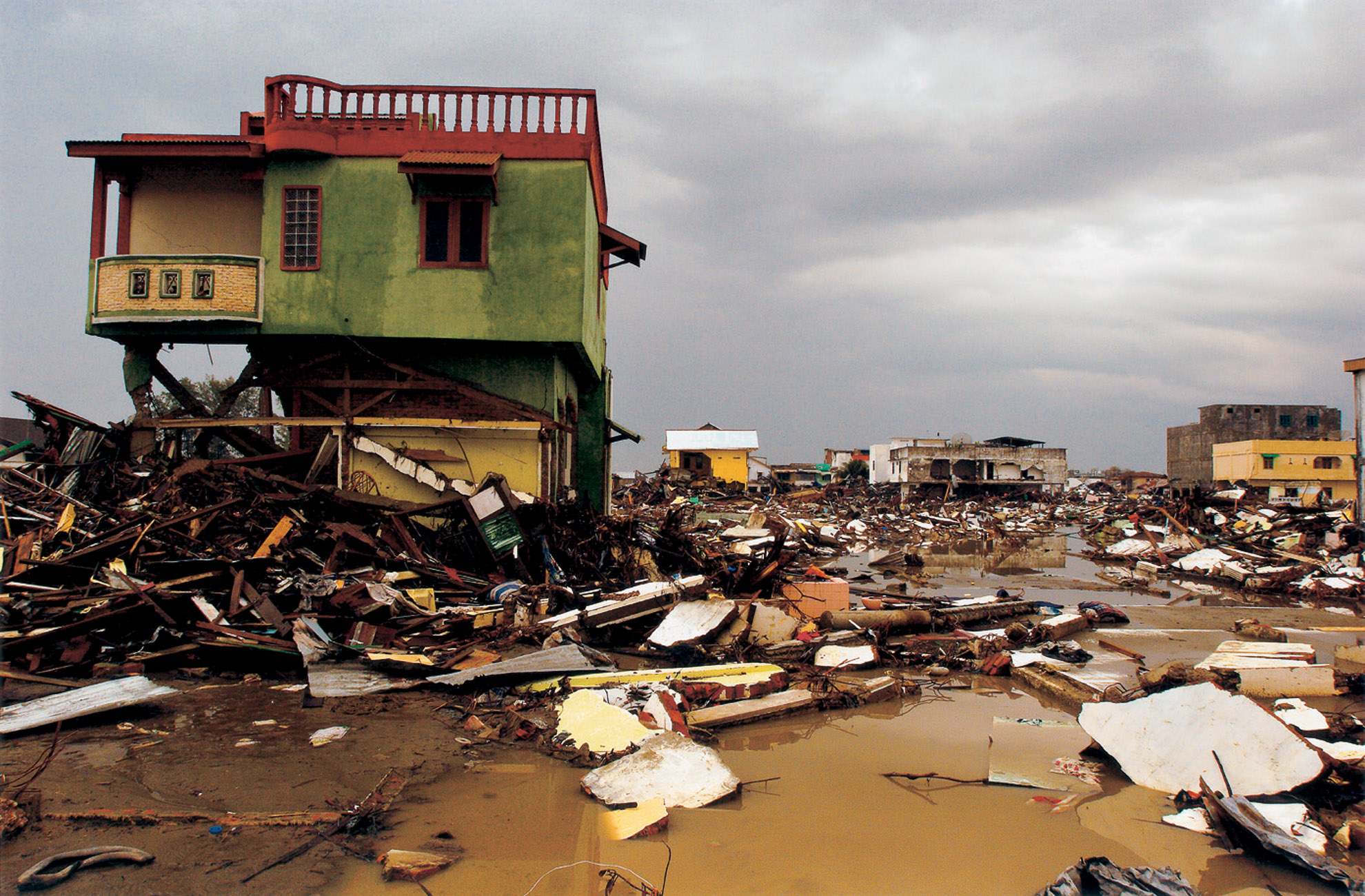Presentation
On 26 December 2004, a massive earthquake, one of the largest in history, struck off the west coast of Sumatra (Indonesia). It measured 9.0 on the Richter scale and its epicenter was located in the sea a few kilometers off the coast.
The terrible seismic movement lasted about seven minutes and formed a large tsunami that grew larger as it approached the mainland. Between 20 and 30 minutes later, the giant mass of water (some who saw it and survived say it was up to 30 metres high) mercilessly struck the entire west of the island, taking with it everything in its path. The result was dramatic.
The Aceh region, with a population of 4.5 million people, was the hardest hit. Three weeks after the disaster, it was estimated that more than 180,000 people were dead and some 12,000 were missing. More than 100,000 houses were destroyed and the number of displaced people exceeded 700,000.
Biography
Javier Teniente (Vigo, 1968) has covered conflicts caused by war, marginalization, and natural disasters in different parts of the world, including reports from Central America (Hurricane Mitch 1998), Kosovo (1999), Iraq (2003), Haiti (2004), and coverage of the Tsunami disaster in Banda Aceh, Indonesia (January 2005).
Over the years he has collaborated as a photographer with the United Nations, Doctors of the World, Doctors without Borders, Action against Hunger, and other international organizations.






